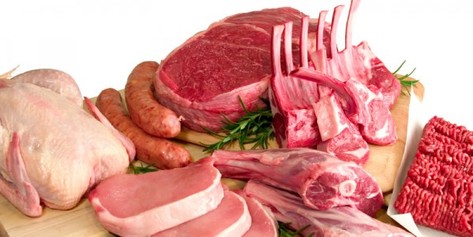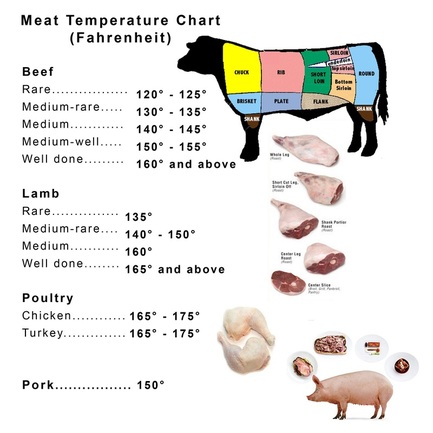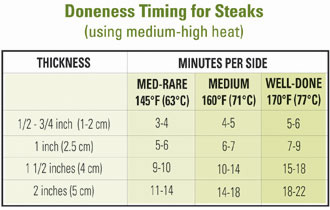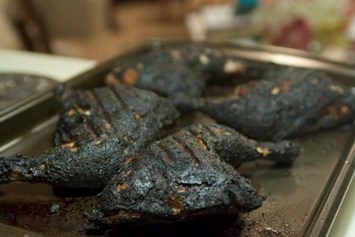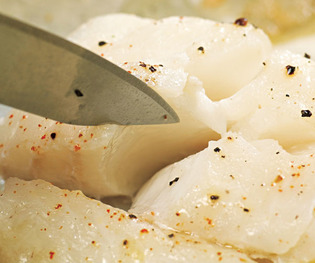If you arm yourself with some knowledge and a few useful tips and tricks, you will find that meats are not something to be feared, but something to be savoured and enjoyed. Sure, you may have to touch a bright red raw steak, or handle some chicken skin, or even get your hands deep into some squishy ground beef, but hey, good food takes some effort. Vegetarians and Vegans, this may not be the post for you.
For most people I've asked, cooking meat is often the most difficult and confusing aspect of dealing with it. The most frequently asked questions surround how to properly cook meat and knowing when something is done. While there are many tips out there that go by feel or scent or psychic ability, for someone just starting out, the easiest and most effective way to check if something is truly done is to get a food thermometer. Armed with a quality food thermometer, getting to the right temperature and doneness without turning your food into a hockey puck or as dry as sawdust is the main challenge. So what target should you reach for? Well here's a handy chart below to help guide where the arrow should land on the temperature target.
Raw meat is more likely to carry the risk of illness like salmonella than your vegetable friends, so you want to prevent cross-contamination when you are preparing any meat alongside uncooked side dishes or food. When you do decide to cook with raw meat of any kind, there is a little prep which I would recommend to prevent any chance, however small, of food-borne pathogens from wreaking havoc on you or your loved ones' meals or stomachs.
Tip #1 - Prep all vegetables and non-meat items first.
Rather than having to wash your cutting board every time you trim a steak, slice up some chicken, or whathaveyou, take a page out of the French Cookery Methodology book and prepare all your non-meat items first and have them ready to go in plates and bowls first. This is called mise-en-place and helps in a variety of ways. First, having everything prepared and ready for when you cook gives you much more control when things really start moving fast and things start hitting the fire. One of the worst feelings a cook can get is to start cooking and realize that they have to stop halfway through their dish because they forgot a step. Having all your vegetables, herbs, and other ingredients prepped ahead of time prevents that from happening and also allows you to focus on prepping your meat last and avoid having the wash knives and cutting boards multiple times.
Tip #2 - Have separate cutting boards for meat.
Don't mind washing a few more items? The multi-board approach then may work for you. While you should own a few different cutting boards in general, a good distinction could be to own separate cutting boards for your meat and non-meat items. This can be an extra barrier to prevent cross-contamination and also allow for greater ease of cleaning. Plastic cutting boards are easier to clean and can even be thrown into a dish washer unlike wood cutting boards that require more care and babying to maintain their finish.
Still squeamish or worried about handling raw meat? Then you may want to consider buying some powder-free non-latex gloves like these just in case.
Other things to consider when prepping your meat is to consider how soon you will be cooking it. While keeping your food in the refrigerator will help stave off spoilage, putting an ice-cold piece of meat straight from the fridge or freezer into a hot pan can lead to a whole other can of worms being opened like extremely uneven cooking. Typically, you will want to take your meat out of the fridge and leave it out for up to one hour before cooking it to make sure things will cook more evenly. This does not mean leaving your meat on the counter all afternoon, however. I'll go into more detail on this seemingly peculiar tip later in this article.
So now that we know what our target temps are, how do we get there? Well, you may be tempted, as so many new cooks are, to heat your pan on high and slap your meat on there and turn it as black as your mortal enemy's soul, but more often than not, you will end up with something like this:
If you are cooking meat all the way through in a pan, such as a chicken breast or pork chop, the highest heat you will use is medium-high. For thicker cuts, you may even stick with medium the entire time. This will make sure the outside ends up tasty and brown and the middle of your food is fully cooked and won't make you potentially sick.
Backing off the throttle also applies to meats that you may not want to cook all the way through - like a nice steak or fresh tuna. By backing off the heat to medium to medium-high and avoiding the incinerate setting of your stove, you buy some insurance in making sure you get to your target doneness while getting that tasty, brown crust on the outside.
Overall, the shorter the journey a piece of meat needs to take from the time it hits the pan to it reaches the target temperature, the better. This goes back to the tip of leaving your meat on the counter for up to an hour before cooking. This will allow the temperature of the meat to come up slightly and ensure more even cooking.
It will be pretty difficult to give you an answer as to how long you will ultimately need to cook for chicken, pork, beef, or whatever specimen of Old MacDonald's Farm you are preparing for the night. For most cuts around 3/4-1" thick, you will likely look around 7-8 minutes per side before you want to start checking for doneness for a well-done type of meat like chicken. For something like steak where you may want some pinkness, the handy chart below can come in handy.
The Importance of resting.
Something I cannot emphasize enough is the importance of resting meat after cooking it. Resting means to let a piece of cooked meat sit for a few minutes, usually around 5-7 for dinner portion sizes, to allow for meat to cool slightly and allow juices to redistribute. Doing so helps to prevent spilling precious juices out everywhere when you cut into it. The sign of a well cooked piece of meat is juiciness when done. That means keeping as much of that savory juice inside whatever you are cooking and not on the cutting board or plate.
Using the thermometer method I mentioned above is a pretty accurate way to gauge if something is fully cooked. But let's say you don't want to have to go through the whole thermometer route (I dont' need no gadget beyond my hands and my mind because I'm a man, grrr!), what's one to do?
Well for chicken and pork, one pretty easy way to determine if it is ready is to do the juice test. Juices should run clear when you cut into it. Choose the least attractive piece (I call it the chef's piece) you have and cut into the middle of the thickest portion of the meat and see what the juices look like. Meat nice and opaque? Juices shimmery and clear like a fresh spring morning? You're good to go. For well done pieces of beef, the story holds true as well.
What about Fish?
Fish is thankfully pretty obvious when it is done. The majority of fish will "flake" when you take a fork to it and pull at a filet. What does that look like? Well like this:
